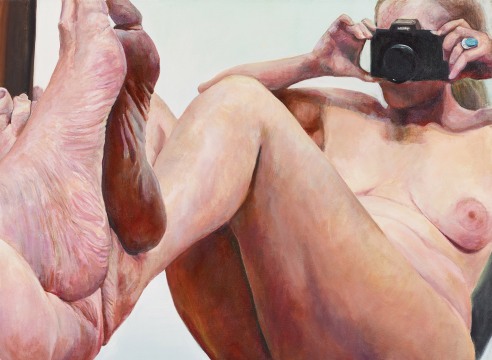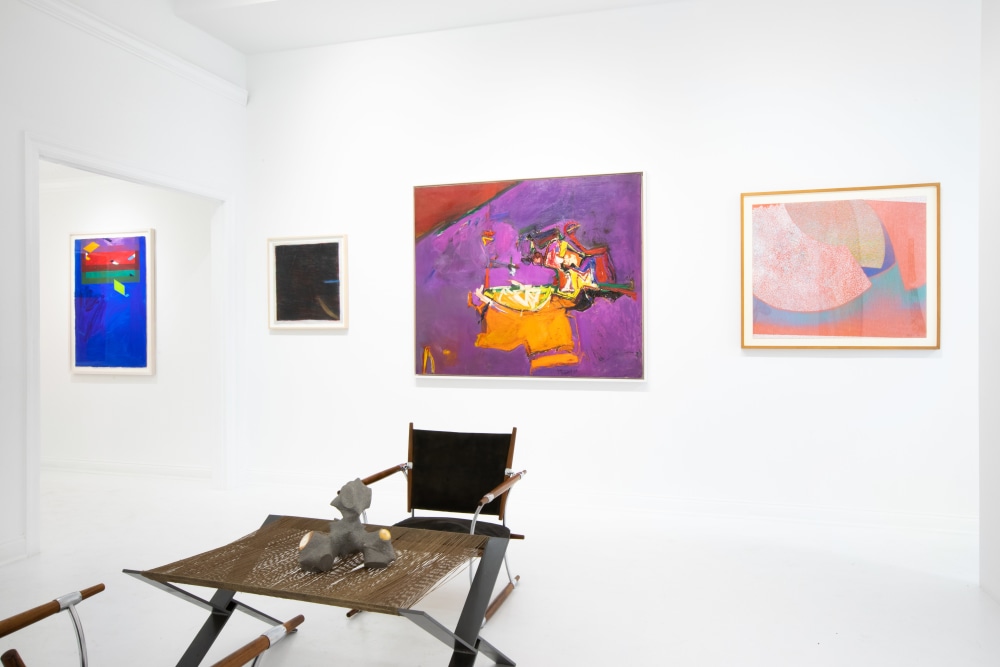

Installation view: HANGING/LEANING: Women Artists on Long Island, 1960s-80s, Eric Firestone Gallery, 2022
Joan Semmel included in the group exhibition HANGING/LEANING: Women Artists on Long Island, 1960s-80s at Eric Firestone Gallery in East Hampton, NY.
Eric Firestone Gallery's press release follows:
Eric Firestone Gallery is pleased to announce Hanging / Leaning: Women Artists on Long Island, 1960s–80s. Opening in East Hampton on Memorial Day Weekend, this sweeping exhibition celebrates the formal ingenuity of postwar women artists with connections to the region. Featured artists include:
Nanette Carter, Seena Donneson, Mary Grigoriadis, Sheila Isham,
Valerie Jaudon, Joyce Kozloff, Li-lan, Pat Lipsky, Adrienne Mim,
Patsy Norvell, Beverly Pepper, Howardena Pindell, Dorothea Rockburne,
Miriam Schapiro, Joan Semmel, Carolee Schneeman, Arlene Slavin, Michelle Stuart,
Kay WalkingStick, Lucia Wilcox, Nina Yankowitz, Barbara Zucker
In the 1960s through ‘80s, these artists established studios, spent time, or exhibited on Long Island. There, they sought to expand the abstract mode with new techniques, materials, and perspectives. The East End—with its social circles, coastal surroundings, and exhibition opportunities—framed or even influenced their daring experiments with form.
Teeming with highly original works, Hanging / Leaning: Women Artists on Long Island, 1960s–80s revisits this rich history of making and presenting art. The exhibition carries on Eric Firestone Gallery’s interest in reexamining the postwar scene on Long Island, underscoring the role of female abstract artists. Hanging / Leaning will unfold across the gallery’s spaces in East Hampton: its primary location at 4 Newtown Lane; and its 7,000 square-foot warehouse at 62 Newtown Lane, opening to the public for the first time.
This exhibition riffs on a show organized on Long Island half a century ago. On view in 1970 at the Emily Lowe Gallery at Hofstra University in Hempstead, Hanging / Leaning presented objects that go against the orientation and composition of traditional painting. It featured twelve artists—two of whom were women, Eva Hesse and Nina Yankowitz. Leaving behind painting’s drum-taut support, Yankowitz contributed Sagging Spiro (1969) from her Draped Painting series of linen panels that she left unstretched, sprayed with acrylic in atmospheric expanses and bleeding bands of color, and stitched so that they hang in soft folds—tumbling off the wall into unusual shapes. That work and others from the same period will be on view in this upcoming exhibition, which departs from the original show by investigating the achievements of postwar women abstractionists. Rather than limit its scope to certain art forms or the usual suspects, this Hanging / Leaning explores the field expansively—with shared place as its unifying principle.
Postwar Long Island was a hub of artistic activity where collectives flourished beyond the New York City scene. Miriam Schapiro, who was first invited to the Hamptons by renowned gallerist Leo Castelli, bought a house in Wainscott in 1953 that became a legendary gathering place for artists. It was there that Schapiro began cultivating her own abstract lexicon rooted in her experiences as a woman and mother. By the 1960s and ‘70s, Schapiro would produce masterpieces such as Fan of Spring (1979), an impeccably constructed and painted fabric collage in the feminine shape of a fan that linked modern painting to women’s craft. Nanette Carter also found kinship in the 1970s and ‘80s when she became affiliated with Al Loving and other Eastville Artists, a collective of mostly Black American practitioners in Sag Harbor. In Carter’s oil pastels from that period, Illumination #1 (1984) and Illumination #41 (1986), countless miniscule marks swirl within surges of organic forms that visualize sound waves.